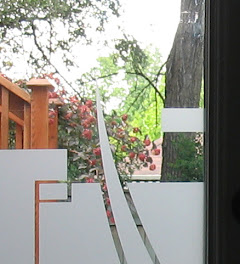
We were obviously excited when we were contacted by Debbie Travis for input on an interior design article she was writing on Window Film. How much more exciting to see our work in print in Debbie Travis' syndicated column 'House to Home' published this week in international media.
In short, Debbie recommends window films for form and function, "What intrigues me about these films is their versatility. Here's a decorative feature that can be both practical and stylish," Debbie states in her column.
We won't be modest, her recommendation of Apex Window Films Toronto is glowing, "Please visit www.apexfilms.ca to see more of their exciting installations."
This is the picture that Debbie used in her syndicated article, a custom-cut graphic in decorative window film for privacy in a Toronto area residence. We installed this beautiful graphic in 2007.
Apex Window Film provides both home and business owners in the Greater Toronto Area with premium quality, custom cut window graphics. While we do it everyday, there is nothing commonplace about our decorative and functional window graphics. Call Apex Window Films of Toronto, we'll be happy to discuss your ideas or to suggest some of our own.
We've been given permission to reprint Debbie Travis' window film article on our website if you would like to read more. For more information and interior design advice, visit Debbie Travis' website at www.DebbieTravis.com



